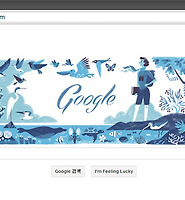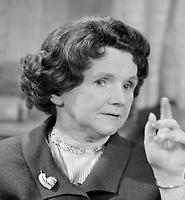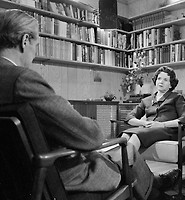티스토리 뷰

1962년 9월 27일 출간된 레이첼 카슨의 혁명적인 환경 고전 <침묵의 봄>.
오늘 60주년을 맞습니다.
DDT로 대표되는 유독성 화학물질 오남용에 대한 경고를 담고 있는 <침묵의 봄>은 기술 · 산업의 발전과 고도성장을 맹목적으로 추구하던 시대에 집필되었습니다.
인간이 땅과 물, 동식물은 물론 인간 스스로를 파괴하고 있는 것은 아닌지 질문하고 답을 끌어 낸, 그야말로 세상을 바꾼 책입니다. 우리는 <침묵의 봄> 이전으로 되돌아갈 수 없습니다.
60년 전에 쓰인 <침묵의 봄>의 메시지는 여전히 유효합니다. 책의 어느 부분을 펼쳐 읽어도 녹슬지 않고 오히려 그 어느 때보다 지금 이 책을 읽기에 시의적절해 보입니다. 현재 우리가 겪고 있는 다양한 문제들을 되짚어 볼 수 있는 문장들로 가득합니다.
바다 생태계에 대한 과학적 지식을 아름다운 문체로 대중에게 전하는 세 권의 책 모두 베스트 셀러 목록에 올렸던 레이첼 카슨은 화학물질과 그로 인한 파괴라는 어려운 주제 역시 일반 대중이 이해하기 쉽도록 썼습니다.
책의 제목 <침묵의 봄>은 영국의 낭만주의 시인 존 키츠의 시('호수의 풀들은 시들어 가고 새들의 울음소리는 들리지 않네')에서 빌려왔고, 책을 여는 글은 짧은 우화입니다.
<침묵의 봄>은 총 17장으로 구성되어 있습니다.
1장 '내일을 위한 우화' 다음으로 물, 흙, 식물 등 세부적인 주제에 대한 장이 이어집니다. (우리가 평소 잊고 지내지만) 우리 생존의 필수적인 요소들이 어떤 위험에 어떻게 처해 있는지, 이는 인간에게 어떤 영향을 줄 것인지 생각하게 합니다.
각 장에서 여러분과 함께 읽고 싶은 문장을 골라 옮깁니다.

1장 내일을 위한 우화
이렇듯 세상은 비탄에 잠겼다. 그러나 이 땅에 새로운 생명 탄생을 금지한 것은 사악한 마술도 아니고 악독한 적의 공격도 아니었다. 사람들 자신이 저지른 일이었다.
2장 참아야 하는 의무
이렇게 시간은 생명체의 생존에 있어 필수적 요소였지만 오늘날에는 그런 충분한 시간이 존재하지 않는다.
3장 죽음의 비술
오늘날에는 인생을 시작하는 바로 그 순간부터 화학물질들이 몸속에 계속 축적되는 것이다.
4장 지표수와 지하수
우리는 자연을 구성하는 요소들은 그 어떤 것도 독자적으로 존재하지 않는다는 점을 기억해야 할 것이다.
5장 토양의 세계
대륙의 표면을 덮고 있는 얇은 층인 토양은 인간을 비롯한 지상 모든 생물들의 생존을 결정한다. 토양이 없다면 식물은 자라지 못하고 식물이 없으면 동물 역시 살아남을 수 없다.
6장 지구의 녹색 외투
지금까지 살펴본 대로 토양과 그 속 혹은 그 위에 살고 있는 생명체 사이에는 상호의존적이고 상호이익을 주는 관계가 존재한다.
7장 불필요한 파괴
도대체 어떤 방법으로 계산했기에 '너무 비싸다'는 결론에 도달한 것일까? (…) 화학물 살포에 의한 총체적인 파괴라는 진짜 비용을 고려하지 않은 것이다.
8장 새는 더 이상 노래하지 않고
유독물질의 연쇄 작용을 일으켜 죽음의 물결을 퍼뜨리는 사람은 누구인가? (…) 그런 사람이 설령 존재한다고 해도 그가 결정을 내릴 권리를 가질 수 있는가?
9장 죽음의 강
언제쯤이면 세상 사람들이 이런 사실을 충분히 깨닫고 그에 상응하는 조치를 요구하게 될 것인가?
10장 공중에서 무차별적으로
가장 비싸고 가장 피해가 크며 그 효과는 제일 적다.
11장 보르자 가문의 꿈을 넘어서
상표에는 아주 작은 글씨로 경고문이 적혀 있는데 제대로 보이지도 않을 정도이다.
12장 인간의 대가
우리 몸 속에도 생태계가 존재한다.
13장 작은 창을 통해서
염색체에 문제를 일으키는 화학물질을 우리 스스로 계속해서 만들어낸다는 사실을 무시해서는 안 된다. 사람들은 싹이 안 나는 감자나 모기가 없는 안뜰을 위해 너무 비싼 대가를 치르는 것은 아닐까?
14장 네 명 중 한 명
발암물질의 '안전 허용량'을 인정하는 것이 과연 옳은 일인가? 발암물질은 전혀 검출되지 않아야 정상이 아닐까?
15장 자연의 반격
인간 역시 자연이 이루는 균형의 일부분이다. 가끔씩 인간이 이런 상태를 자의적으로 바꾸곤 한다. 그 결과 인간에게 불리한 방향으로 문제가 일어난다.
16장 밀려오는 비상 사태
문제를 해결한다며 상황을 더욱 악화시키는 방식을 사용하는 것이 과연 현명한지 잘 생각해야 한다.
17장 가지 않은 길
그 선택은 우리 자신에게 달려있다. 그동안 무분별하고 놀라운 위험을 강요당해왔다는 사실을 인식하게 된다면, 지금까지 충분히 인내해온 우리가 마지막으로 '알 권리'를 주장하고자 한다면, 그때야말로 독극물로 세상을 가득 채우려는 사람들의 충고를 더 이상 받아들이지 않게 될 것이다. 우리는 주위를 둘러보며 어떤 또 다른 길이 열려 있는지를 확인해야 한다.
(침묵의 봄, 레이첼 카슨 지금, 김은형 옮김, 에코리브르, 2003)
레이첼 카슨은 지구 생명의 역사, 생명체와 환경의 상호 작용에 대한 깊은 이해를 바탕으로 거미줄처럼 짜인 생태계의 상호의존성을 우리에게 친절하게 설명합니다.
- 지구 생명의 역사는 생명체와 그 환경의 상호작용의 역사라고 말할 수 있다.
- 지구 상에 사는 생명체가 만들어지는 데에는 수억 년이 걸렸다.
- 단지 몇 년이 아니라 수천 년에 이르는 시간동안 생명체는 환경에 적응하고 그 결과 적절한 균형 상태에 도달한다.
- 자연을 구성하는 요소들은 그 어떤 것도 독자적으로 존재하지 않는다.
- 식물과 대지, 식물과 식물, 식물과 동물 사이에는 절대 끊을 수 없는 친밀하고 필수적인 관계가 존재한다. 식물 역시 생명계를 구성하는 거대한 네트워크의 일부이다.
- 자연이 스스로 결정한 이런 정확하고 미묘한 타이밍에 의해 어떤 야생벌은 버드나무 꽃이 피기 시작하는 바로 그날 등장한다.
- 새롭고 상상력 풍부하며 창의적인 접근법은 이 세상이 인간만의 것이 아니라 모든 생물과 공유하는 것이라는 데에서 출발한다.

단순히 흐르기만 한 것이 아니라 긴 시간 동안 부단히 진화와 분화를 거쳐 이뤄진 생태계의 적절한 균형 상태를 부주의한 우리 인간이 깨고 있음을 지적합니다.
우리가 겪고 있는 문제들은 우리 스스로 만들어 냈기에 그 문제를 해결할 힘도 우리에게 있습니다.
- 20세기에 들어서 오직 단 하나의 생물종, 즉 인간만이 자신이 속한 세계의 본성을 변화시킬 수 있는 놀라운 위력을 획득했다.
- 환경에 대한 인간의 공격 중 가장 놀라운 것은 위험하고 때로는 치명적인 유독물질로 공기와 토양과 하천과 바다를 오염시킨 일이었다.
- 인간의 충동적이고 부주의한 활동에 의해 자연의 신중한 속도와는 비교조차 할 수 없는 빠른 속도로 새로운 변화가 초래된다.
- 이제는 인간의 상상력이 고안해내고 실험실에서 만들어진, 그렇기 때문에 자연상태에서는 어떤 대응 상대로 없는 합성물질에도 적응해야만 한다.
- 자연은 자연계에 다양성을 선사했지만 인간은 이를 단순화하는 데 열성을 보이고 있다.
- 지성을 갖춘 인간들이 원치 않는 몇 종류의 곤충을 없애기 위해 자연환경 전부를 오염시키고 그 자신까지 질병과 죽음으로 몰고 가는 길을 선택한 이유를 궁금해 할 것이다. 하지만 그것이 바로 우리가 저지른 일이다.
- 독극물의 고의적인 방류가 너무나도 일상적으로 자행된다는 것은 정말 놀라운 일이다.
- 우리는 가끔 이런 관계를 교란시키는 선택을 하는데, 그렇다고 해도 한참 후 멀리 떨어진 곳에서 그 결과가 어떻게 나타날지 정신을 바짝 차리고 사려 깊게 생각해야 한다.
- 오늘날 대부분의 발암물질을 만들어낸 장본인은 바로 사람이다. 그러므로 만일 원하기만 한다면 그 위험물질의 상당수를 없애버릴 수도 있다.

레이첼 카슨은 DDT를 비롯한 유독성 화학물질을 무조건 반대하지 않습니다.
그는 어떤 해결책을 내놓고 실행하기 전에 그것이 과연 최선인지, 다른 대안은 없는지, 그로 인한 파급효과까지 면밀하게 따져보고 충분히 탐색해야 함을 강조합니다. 문제가 아닌 것을 문제시하는 것 역시 경계해야합니다.
- 미국에 들어온 후 40여 년 동안 불개미들은 세인의 관심을 끌지 못했다. (…) 그런데 치명적인 위력을 지닌 화학약품의 개발과 함께 불개미에 대한 정부의 태도도 갑작스럽게 변하기 시작했다. 1957년 미국 농무부는 역사상 가장 주목할 만한 캠페인을 착수했다. 정부간행물과 영화 등에서 불개미가 갑자기 집중적인 공격 대상이 되어 남부 농업의 파괴자이자 조류, 가축, 인간들을 죽이는 존재로 묘사되었다.
- 내가 지적하고자 하는 것은, 독성이 있고 생물학적 문제를 일으킬 수 있는 잠재성을 가진 살충제를 그 위험을 제대로 알지 못하는 사람의 손에 쥐어주고 있다는 사실이다.
- 진정한 비용은 그저 돈으로만 환산하는 것이 아니라 실질적으로 고려할 가치가 있는 숨은 비용도 고려한 것이어야 한다.
- 유독물질의 연쇄작용을 일으켜 죽음의 물결을 퍼뜨리는 사람은 누구인가? (…) 결정을 내리는 사람은 우리가 잠시동안 권력을 맡긴 관리들이다.

<침묵의 봄> 서문에서 린다 리어는 "카슨은 자기만족적이고 점점 부유해지는 전후 세대를 향해서 '정부가 자신들을 보살펴주리라 믿어서는 안 되고 시민 개개인이 정부 정책의 실효성을 살펴야 하며, 자신을 잘못된 길로 이끌려는 의도에 도전해야 한다'고 주장한 최초의 인물 중 한 사람이었다"고 밝힙니다.
레이첼 카슨은 대중들이 전문가와 관계자들의 결정을 그저 믿고 따라서는 안 된다고 말합니다.
- 사람들은 효력도 덜하고 훨씬 해로운 수단을 어쩔 수 없다며 그저 받아들인다.
- 아무런 대응책이 없다는 듯 우리는 화학물질이라는 죽음의 비를 수수방관하며 맞고 있다. 하지만 대안은 곳곳에 존재하며 인간이 특유의 지적능력을 발휘한다면 더 많은 해결책을 찾아낼 것이 틀림없다.
- 평범한 시민이라면 우아한 판매 기술과 얼굴 없는 설득자에게 속아넘어가 우리 주변을 둘러싸고 있는 죽음의 물질을 인식할 수 없게 된다. 아마 자신이 이런 물질을 사용하고 있다는 사실조차 잘 인식하지 못할 것이다.
- 우리가 결정을 내리려면 현재 벌어지는 상황과 진실을 제대로 알아야 한다. 진 로스탄드는 이런 말을 했다. "참아야 하는 것이 우리의 의무라면, 알아야 하는 것은 우리의 권리다."
레이첼 카슨은 <침묵의 봄>을 완성하기까지 4년이 넘는 긴 시간을 보냈습니다.
화학산업체와 그들로부터 지원 받는 과학자, 언론의 공격이 예상되었기에 모든 데이터와 사례를 면밀하게 검토했습니다.
참고문헌이 55쪽이나 되는데, 카슨은 '사실들을 모두 모아서 그것들이 스스로 말하게끔 해야 한다'라고 굳게 믿었습니다.
이 시기에 카슨은 암과도 싸웠습니다.
오진으로 치료 시기를 놓쳤던 카슨은 몸이 너무 약해져서 글을 쓰기 위해 앉아 있는 것도 어려웠다고 합니다.
바다에 관한 다음 책을 준비하고 있었고 그 책을 쓸 수 있었지만 힘든 싸움을 해야 할 것을 알면서도 <침묵의 봄>을 세상에 내놓았습니다. 레이첼 카슨은 <침묵의 봄>을 쓰지 않을 수 없는 이유를 "마치 에이브러햄 링컨이 '저항해야 할 때 침묵하는 것은 비겁하다'라고 외쳤을 때와 같은 의무감에서 비롯되었다"라고 친구에게 보낸 편지에 적었습니다.
화학산업체는 레이첼 카슨과 <침묵의 봄>의 출판사를 소송하는 것에 실패하자 막대한 비용을 들여 레이첼 카슨을 공격하는 캠페인을 벌였습니다. 그러나 공격이 거세질수록 대중들은 <침묵의 봄>이 들려주는 진실에 귀를 기울였습니다.
시민들은 정부에 탄원서를 냈습니다. 당시 케네디 정부는 특별 위원회(대통령 과학자문위원회)를 구성해 조사에 착수했고, 최종보고서에서 <침묵의 봄>이 말하는 모든 것이 사실이라는 결론을 내립니다. 이후 미국에 환경부가 창설되었고 미국 환경부는 자신들을 '레이첼 카슨의 그림자'라고 부릅니다.
레이첼 카슨은 <침묵의 봄>이 출간되고 2년이 되지 않은 1964년 4월 세상을 떠났습니다.
위대한 책, 위대한 삶. <침묵의 봄>과 레이첼 카슨 함께 읽기를 권합니다.
티스토리 뷰
환경부 유튜브 채널 프로그램,
영상으로 환경책을 만나는 [환경산冊]에서 레이첼 카슨과 그의 책 <침묵의 봄>을 소개했습니다.
우리 일상 속 쓸모를 다하고 버려진 철사를 수집하여 작업하는
철사 아티스트 '좋아은경'
그녀가 오늘 여러분에게 소개할 책은 환경책의 고전이라 불리는 '침묵의 봄'입니다.
'침묵의 봄'은 무분별한 살충제 사용으로 인한 생태계의 파괴를 고발한 내용으로
전 세계에 환경 운동을 촉발시킨 고마운 고전이죠.
현재 많은 사람들이 미세먼지, 기후위기, 코로나19의 원인을 찾고 있어요.
이 책이 직접적으로 답을 알려주지는 않지만
해결책을 찾는 과정에서 본질적인 질문을 던질 수 있다고 생각합니다.
영상을 통해 '침묵의 봄'을 만나보세요!
환경부 유튜브 채널 구독하기▶ https://bit.ly/2NtQhAW
티스토리 뷰

2014년 5월 27일, 레이첼 카슨 탄생 107주년을 기념한 구글의 로고, 구글 두들은
해양 생태계의 다양한 생물종에 둘러싸인 채 바다를 바라보고 있는 레이첼 카슨의 모습입니다.
두들 페이지(http://www.google.com/doodles/rachel-louise-carsons-107th-birthday)의 설명에 따르면 초기 시안은 레이첼 카슨이 스카프가 휘날리며 바다를 응시하는 모습만을 담았지만, 최종 결과물은 침묵의 봄의 In nature nothing exists alone(자연을 구성하는 요소들은 그 어떤 것도 독자적으로 존재하지 않는다)에 영감을 받은 것으로 보인다고 합니다.
깜짝 선물을 받은 기분이 드는 오늘, 레이첼 카슨의 책에서 한 토막 글을 옮깁니다.
"도시와 시골의 인공세계에서 살아가는 사람은 종종 자기가 살고 있는 행성의 진정한 본질과 그 긴 역사(인류가 존재한 것은 그 속에서 찰나에 지나지 않는)에 대한 안목을 잊어버린다. 이 모든 것에 대한 감각은 긴 대양 항해에 나서 날마다 파도가 넘실대는 수평선이 뒤로 물러나는 것을 보고, 밤에는 머리 위의 별들이 움직이는 것을 보고 지구의 자전을 인식하고, 물과 바다만 존재하는 이 세계에 홀로 서서 우주에서 자기가 사는 행성의 외로움을 느낄 때, 가장 생생하게 되살아난다. 그리고 육지에서는 한번도 느껴보지 못했던 사실, 즉 우리가 살고 있는 세계가 물의 세계이며, 대륙은 모든 것을 둘러싸고 있는 바다 수면 위로 잠시 솟아있는 땅덩어리에 불과하다는 사실을 절감하게 된다."
레이첼 카슨,우리를 둘러싼 바다
"In the artificial world of his cities and towns, he often forgets the true nature of his planet and the long vistas of its history, in which the existence of the race of men has occupied a mere moment of time. The sense of all these things comes to him most clearly in the course of a long ocean voyage, when he watches day after day the receding rim of the horizon . . . or when, alone in his world of water and sky, he feels the loneliness of his earth in space. And then, as never on land, he knows the truth that his world is a water world, a planet dominated by its covering mantle of ocean, in which the continents are but transient intrusions of land above the surface of the all-encircling sea."
Rachel Carson, The Sea Around Us
관련 기사
레이첼 루이즈 카슨, 구글 로고 등장 '침묵의 봄'으로 DDT위험 경고
http://www.asiae.co.kr/news/view.htm?idxno=2014052709191802805
RACHEL LOUISE CARSON: Google lets fly a Doodle true to 'Silent Spring' writer's nature
http://www.washingtonpost.com/news/comic-riffs/wp/2014/05/27/rachel-louise-carson-google-lets-fly-a-doodle-true-to-environmental-writers-nature/
Google Doodle Celebrates Rachel Louise Carson's 107th Birthday
http://www.ndtv.com/article/world/google-doodle-celebrates-rachel-louise-carson-s-107th-birthday-531225
티스토리 뷰
Wed 26 Dec 2012 21:00, BBC Radio 4
Rachel Carson and the legacy of Silent Spring →Link
Fifty years after the publication of the book that laid the foundations for the environmental movement, what have we learned from the biologist who saw the need for science to work with nature?
Robin McKie / The Observer, Sunday 27 May 2012
Rachel Carson Didn’t Kill Millions of Africans →Link
How the 50-year-old campaign against Silent Spring still distorts environmental debates.
By William Souder / SEPT. 4 2012 5:02 AM
What is the legacy of Rachel Carson's Silent Spring? →Link
Fifty years after its publication, Rachel Carson's investigation into pesticides still divides opinion.
Leo Hickman / Thursday 27 September 2012 18.10
Rachel Carson's Silent Spring Reaches Its 50th Anniversary →Link
How Silent Spring Became the First Shot in the War Over the Environment. 50 years old this month, Rachel Carson's book Silent Spring helped kickstart the environmental movement and led the U.S. to ban the pesticide DDT. So why do some people blame Carson for millions of malaria deaths in Africa?
By Bryan Walsh @bryanrwalshSept. 25, 2012
티스토리 뷰
홍성욱 서울대 생명과학부 교수 / 기사입력 2012-11-08 03:00:00
필자는 올해 이 난의 첫 칼럼을 레이철 카슨과 토머스 쿤으로 시작했다. 환경과 과학 분야에 큰 영향을 미친 ‘침묵의 봄’과 ‘과학혁명의 구조’가 딱 50년 전인 1962년에 출판되었기 때문이다. ‘침묵의 봄’은 살충제 DDT가 생태계의 먹이사슬을 통해 생명체에 축적되면서 환경에 미칠 수 있는 끔찍한 영향을 경고한 책으로 DDT의 금지라는 정부의 규제를 이끌어 냈고 전 세계적인 환경운동을 촉발하는 기폭제가 되었다.
DDT의 발명자 파울 뮐러는 1948년에 그 공로로 노벨상을 받았고, 당시 DDT는 마법 같은 과학의 성과로 간주되고 있었다. 카슨이 DDT를 비판하자 이를 만들던 화학회사들은 출판사를 고소하겠다며 엄포를 놓았고, 과학자들 중에서도 카슨이 화학이나 농학을 공부하지 않은 비전문가라고 비판하는 사람들이 등장했다. 그렇지만 DDT의 위험을 평가하는 역할을 맡은 미국 대통령 과학자문위원회는 여러 정보를 수합하고 평가한 뒤에 살충제 사용을 제한하는 행동에 즉각 돌입해야 한다고 결론을 내렸다. 이후 많은 논의 끝에 미 연방정부는 1972년에 DDT를 금지했다.
그런데 이런 긍정적인 평가와는 너무나도 다른, 극단적으로 부정적인 평가도 존재한다. 카슨의 ‘침묵의 봄’이 DDT를 금지시킴으로써 아프리카와 같은 저개발국에서 말라리아가 창궐했고, 결과적으로 수백만 명의 사람을 죽게 만들었다는 것이다. 그녀의 책은 환경을 구했을지는 모르지만, 과학을 무시한 대가로 사람을 희생시켰다는 것이다. 이들은 지금 우리에게 필요한 것은 DDT를 부활시키는 것이라고 외친다. 심지어 카슨이 히틀러나 스탈린보다도 더 많은 사람을 죽였다는 선정적인 얘기도 심심치 않게 들린다.
사실 조금만 생각해 봐도 이런 평가에는 문제가 있음을 알 수 있다. DDT를 금지한 것은 미국이었지, 열대 지역의 저개발 국가가 아니었다. 열대 지역의 많은 저개발 국가에서 DDT는 계속 합법적으로 사용되었고, 지금도 사용되고 있다. DDT의 사용이 전 세계적으로 줄어든 것은 그것을 금지해서가 아니라 그 효용이 떨어졌기 때문인데, 그 가장 중요한 이유는 말라리아를 유발하는 모기에게 DDT 내성이 생겼기 때문이다. DDT를 넓은 지역에 살포해서 모기를 죽이면, 내성을 가진 소수의 모기가 그 다음 해에 번식하고 이때는 DDT를 더 강하게 살포해야 한다. 이렇게 몇 년만 지나면 아무리 강한 살충제를 써도 잘 죽지 않는 모기가 창궐한다. 스리랑카가 말라리아 박멸에 실패한 것은 DDT를 금지해서가 아니라 모기가 내성을 발전시켰기 때문이다.
‘카슨 죽이기’의 근원지는 미국이다. 1990년대에 미국의 ‘건전과학진흥연맹’의 스티븐 밀로이는 DDT 금지가 수백만 명을 죽였다는 얘기를 퍼뜨리기 시작했다. 밀로이와 ‘건전과학진흥연맹’은 담배회사에서 지원을 받아 담배가 폐암을 유발하지 않는다는 주장을 폈던 것으로 유명하다. 그는 지구 온난화를 ‘사기극’이라고 부정하며, 산성비와 오존홀에 대한 과학적 합의를 ‘쓰레기 과학(정크 사이언스)’이라고 비난한다.
카슨을 공격한 과학자 딕시 레이는 오존홀을 부정한 것으로 잘 알려져 있다. 미국의 우파단체인 경쟁기업연구소는 카슨이 틀렸다고 주장한 사람을 노벨 평화상 후보로 밀었고, 미국기업연구소는 카슨을 비난한 마이클 크라이턴의 작품을 선전했다. 카슨을 공격하는 또 다른 연구소인 하트랜드연구소는 지구 온난화를 집요하게 공격한다. 이들은 과학기술이 문제를 낳을 수 있다는 것을 인정하지 않고, 시장의 실패를 인정하지 않으며, 환경이나 건강을 고려한 정부의 규제는 무조건 나쁜 결과를 낳는다고 믿는 사람들이다.
‘침묵의 봄’은 생태계를 무시하고 과학기술을 오용했을 때 생길 수 있는 부작용이 얼마나 위험할 수 있는가를 일깨워 줌으로써, 사람들이 세상을 새롭게 볼 수 있게 만든 ‘혁명적인’ 책이었다. 그녀는 살충제가 인간의 건강에 미치는 영향에 대해서는 아주 제한된 얘기만을 했지만, 2005년 의학저널 ‘랜싯’에 나온 한 논문은 DDT가 조산, 저체중아 출산, 유아 사망 등과 밀접한 상관관계가 있음을 주장하고 있으며, 2007년에 출판된 다른 논문은 1940, 50년대에 DDT에 노출되었을 여성들의 유방암 발병률이 다른 여성들에 비해 5배 높다는 점을 보이고 있다. 이런 연구들은 환경에 미친 피해가 인간에게까지 이를 수 있다는 카슨의 주장이 과학적으로도 틀리지 않았음을 보여준다.
‘카슨 죽이기’ 캠페인처럼 근거 없는 엉터리 주장도 ‘과학’의 외피를 쓰고 등장했을 때 그럴듯하게 보이면서 사람들을 현혹할 수 있다. 지난 몇 년을 돌이켜 보면 우리 사회에서도 ‘과학’의 이름으로 맹신을 요구하는 목소리가 점점 커지고 있다. 이런 때일수록 더 필요한 것은 균형감을 가지고 여러 주장의 근거를 차분하게 따져보는 것이다. 이것이 진정한 과학적 사고이자 방법이다.
[아침을 열며/4월 25일] 침묵의 봄, 소란한 여름 →기사링크
조효제 성공회대 사회과학부 교수 / 입력시간 : 2012.04.24 21:02:07
[과학 오디세이]‘침묵의 봄’과 ‘시끄러운 여름’을 넘어서 →기사링크
이상욱 한양대 교수·철학 / 입력 : 2012-05-20 21:40:06
티스토리 뷰
EBS 배움너머 레이첼카슨의 조용한 주장
2013 National History Day (Nationals): Silent Spring
Rachel Carson Documentary
National Women's History Month: Rachel Carson






